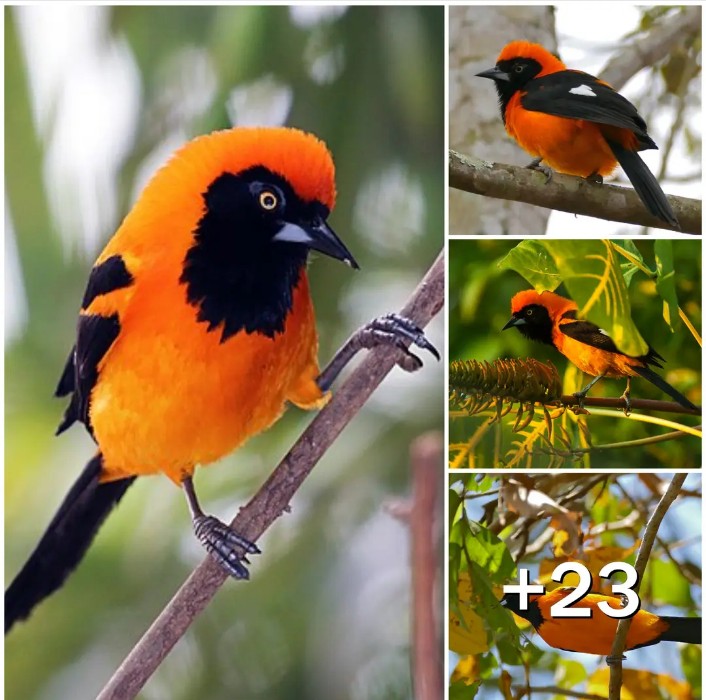Introduction
In the vibrant realm of avian wonders, few creatures rival the stunning beauty of the Orange Troupial (Icterus aurantiacus). This tropical gem, native to parts of Central and South America, captivates onlookers with its breathtaking plumage, characterized by a dazzling blend of shimmering orange and velvety black. Let us embark on a journey to explore the mesmerizing world of this avian masterpiece.
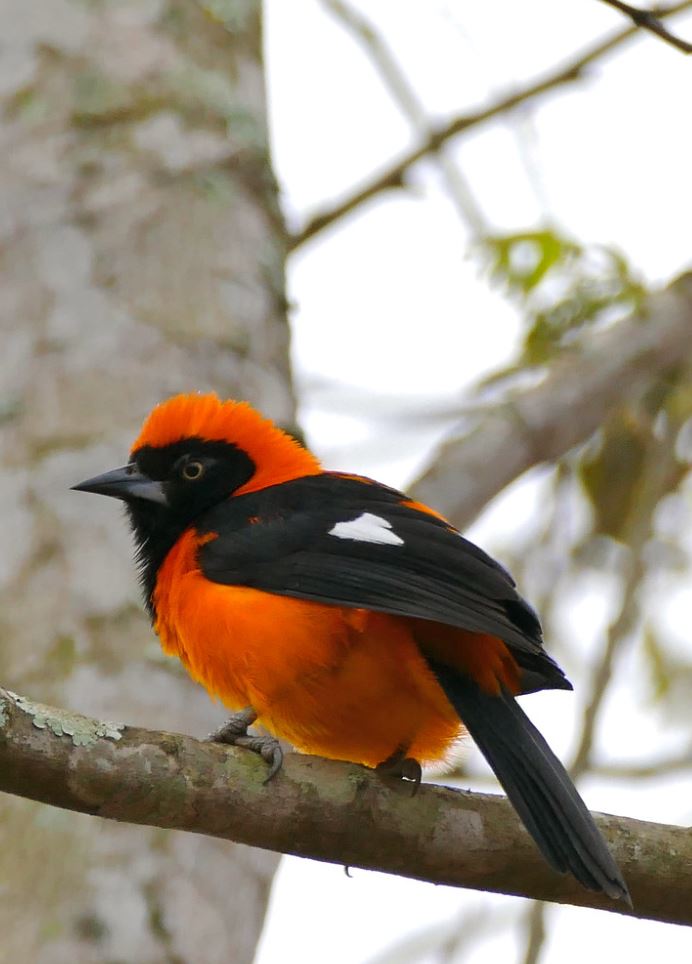
The Resplendent Plumage
The Orange Troupial is a true testament to the artistic prowess of nature. Measuring about 25 centimeters in length, it sports a vibrant orange hue that gleams like a setting sun. This luminous coloration is primarily visible on the bird’s underparts, creating a striking contrast with its jet-black wings, tail, and mask-like facial markings.
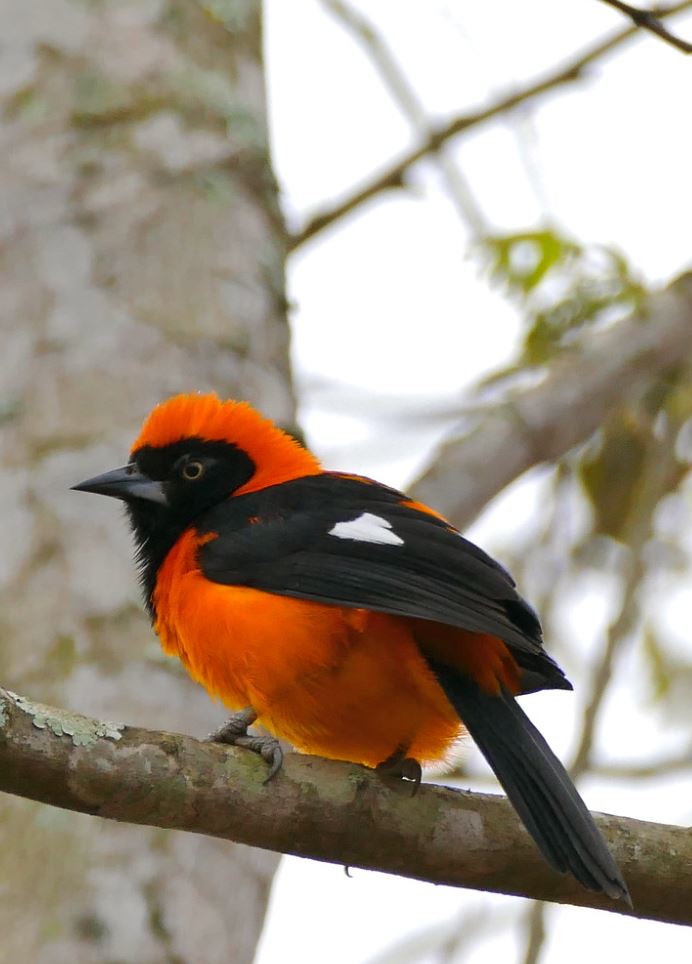
The wings of the Orange Troupial are a study in contrast. While the upper parts are a glossy, inky black, the undersides are a brilliant, fiery orange. This striking juxtaposition is particularly noticeable in flight, where the bird’s wings seem to dance with the play of light and shadow, creating a spectacle that enchants even the most seasoned birdwatchers.
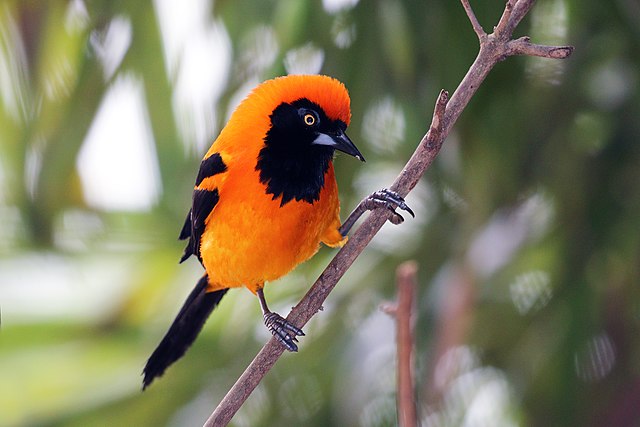
Habitat and Range
The Orange Troupial is a native of the lush tropical forests, woodlands, and savannas of Central and South America. Its range spans from eastern Panama, through Colombia, Venezuela, Guyana, Suriname, and into northern Brazil. These birds are particularly fond of dense vegetation near water bodies, where they can forage for insects, fruits, and nectar, all of which make up their diverse diet.
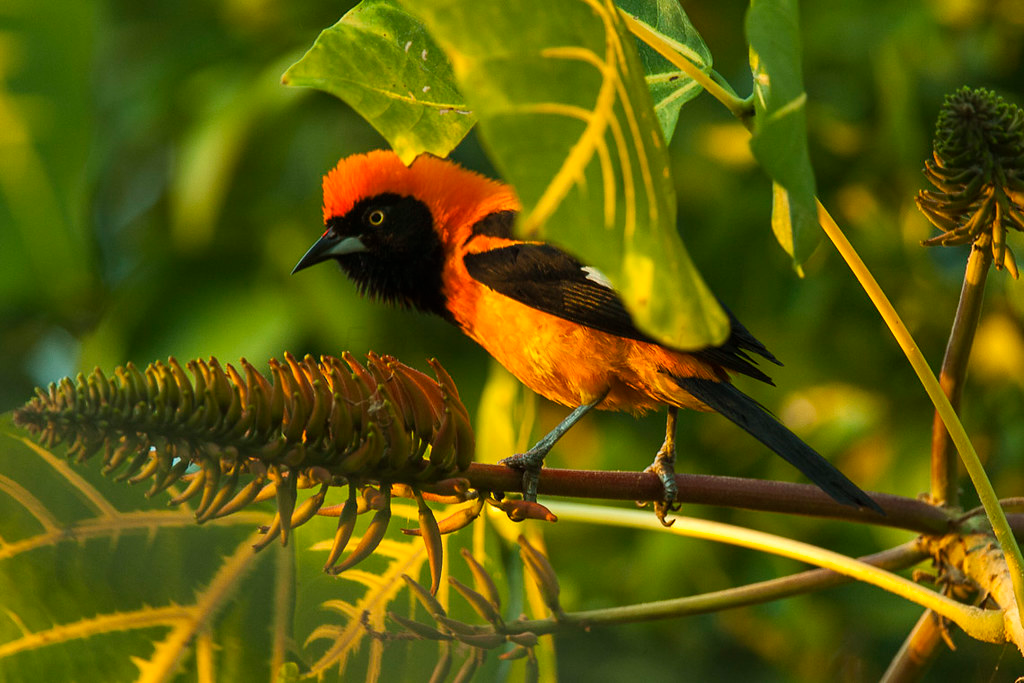
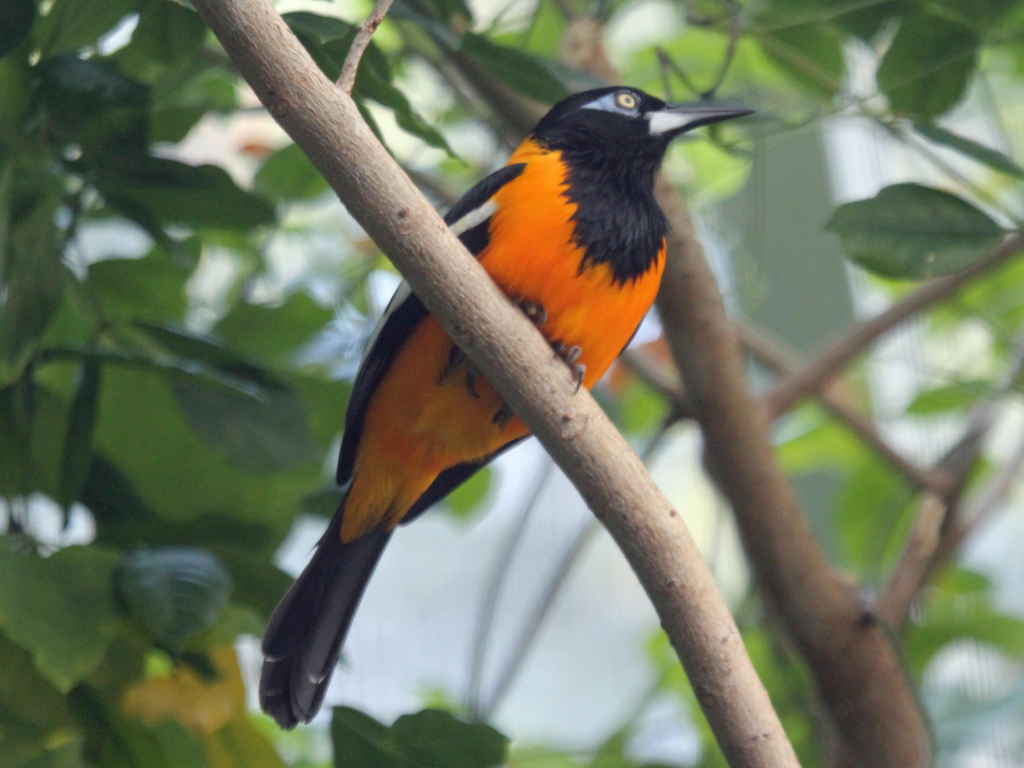
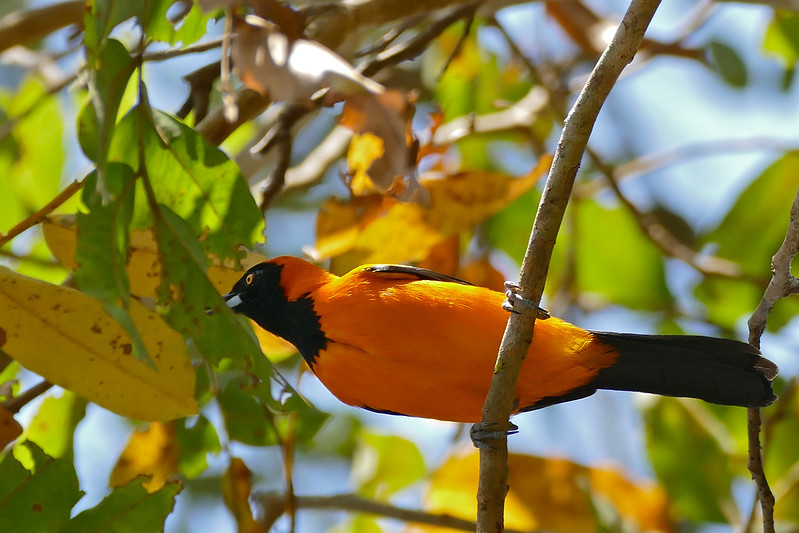
Social and Vocal Behaviors
These avian wonders are known for their social nature. They are often found in small groups, fluttering and chattering amidst the canopy. Their musical calls, a delightful medley of whistles and trills, serve as a cheerful soundtrack to the tropical forests they inhabit. The vocalizations play a crucial role in establishing territories and maintaining social bonds within the group.
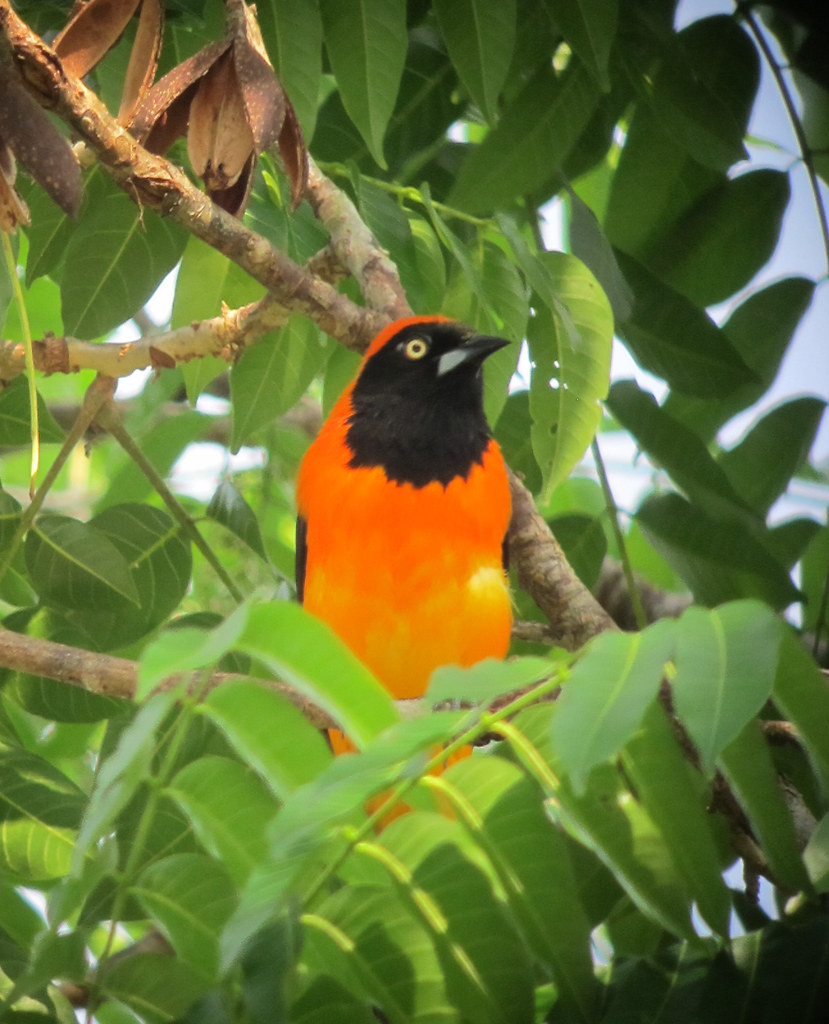
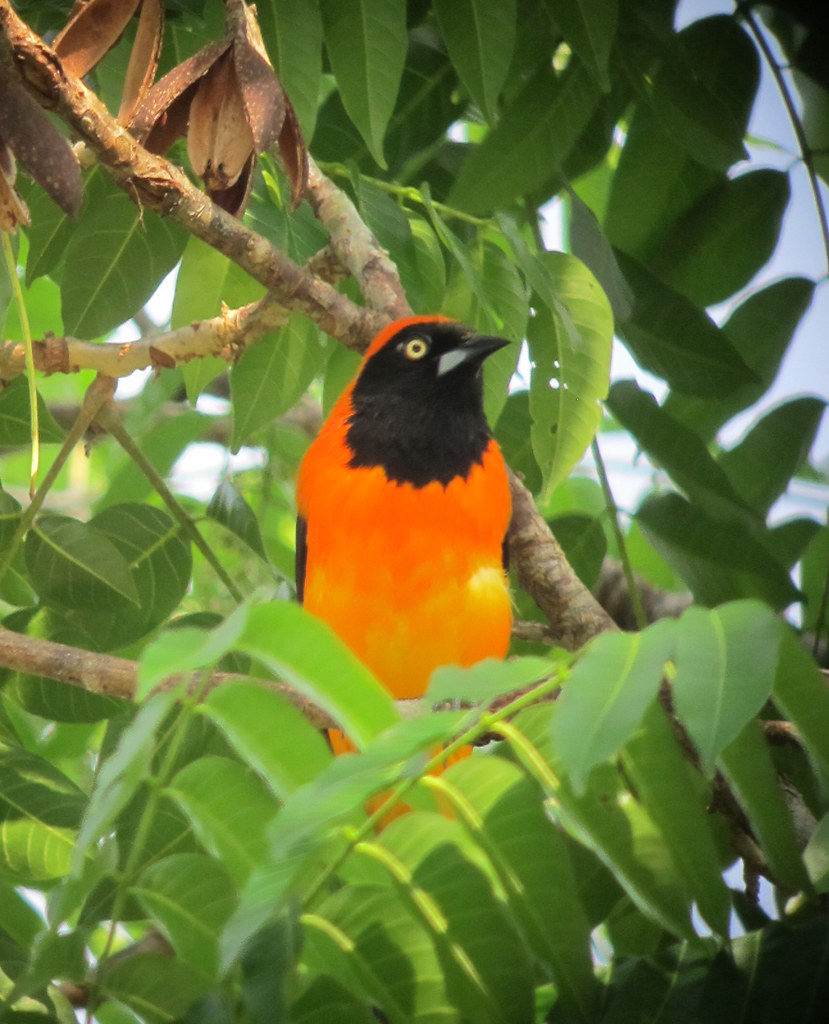
Diet and Foraging
The Orange Troupial is an omnivore with a diverse palate. Their diet includes a wide array of insects, spiders, fruits, and nectar. This eclectic taste allows them to thrive in various habitats and ensures they play a vital role in their ecosystem’s delicate balance.
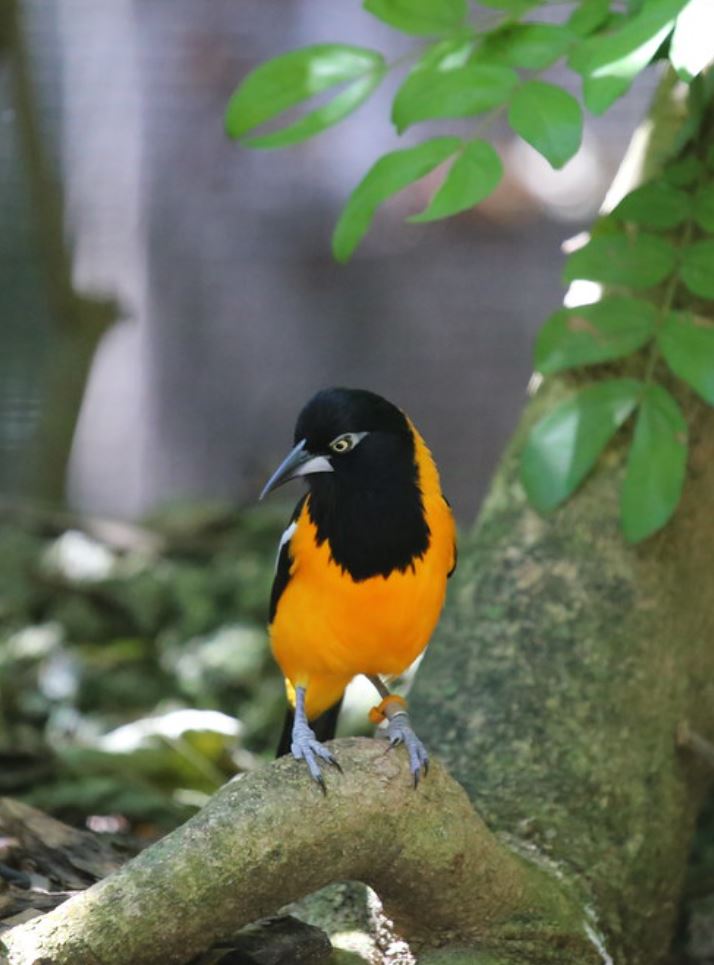
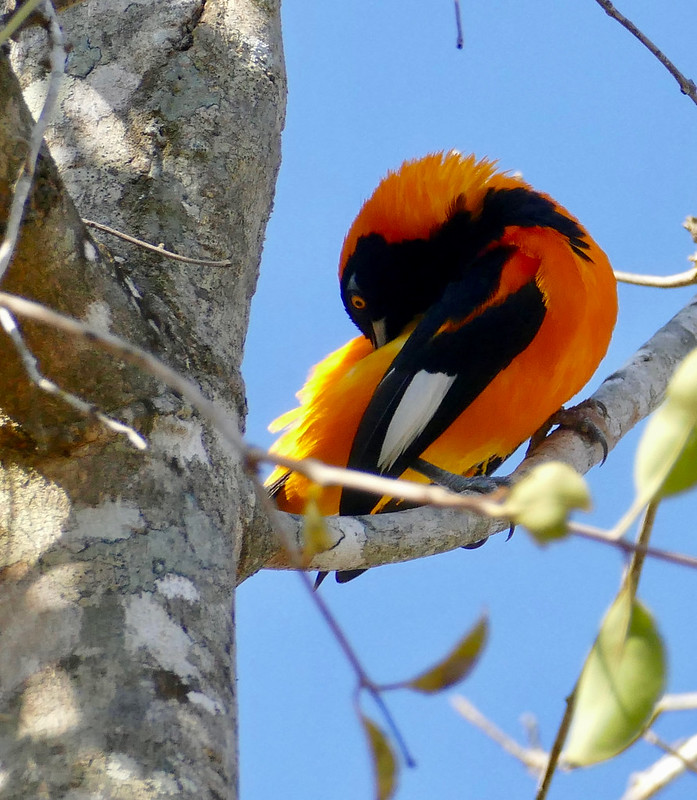
Breeding and Nesting
During the breeding season, the male Orange Troupial showcases his charms by singing intricate songs and engaging in elaborate displays to win the favor of a mate. Once a pair is formed, they collaborate in building a cup-shaped nest suspended from the branches of a tree. The female lays a clutch of eggs, which she incubates while the male stands guard, demonstrating the devotion and teamwork that characterize this species.
Conservation Status
The Orange Troupial, while not currently listed as a globally threatened species, faces localized threats. Habitat loss due to deforestation and the fragmentation of their natural habitats pose significant challenges to their survival. Efforts to protect and conserve the forests and wetlands they call home are crucial in ensuring the continued existence of this enchanting bird.
Conclusion
The Orange Troupial stands as a testament to the astonishing diversity of life on our planet. With its resplendent combination of shimmering orange and velvety black plumage, it is a living work of art. Its presence in the tropical forests of Central and South America enriches our natural heritage and serves as a poignant reminder of the importance of preserving these invaluable ecosystems.
As we continue to learn and appreciate the wonders of the natural world, may the Orange Troupial inspire us to protect and cherish the habitats that sustain it, ensuring that future generations can also marvel at this brilliantly colored bird in all its glory.
